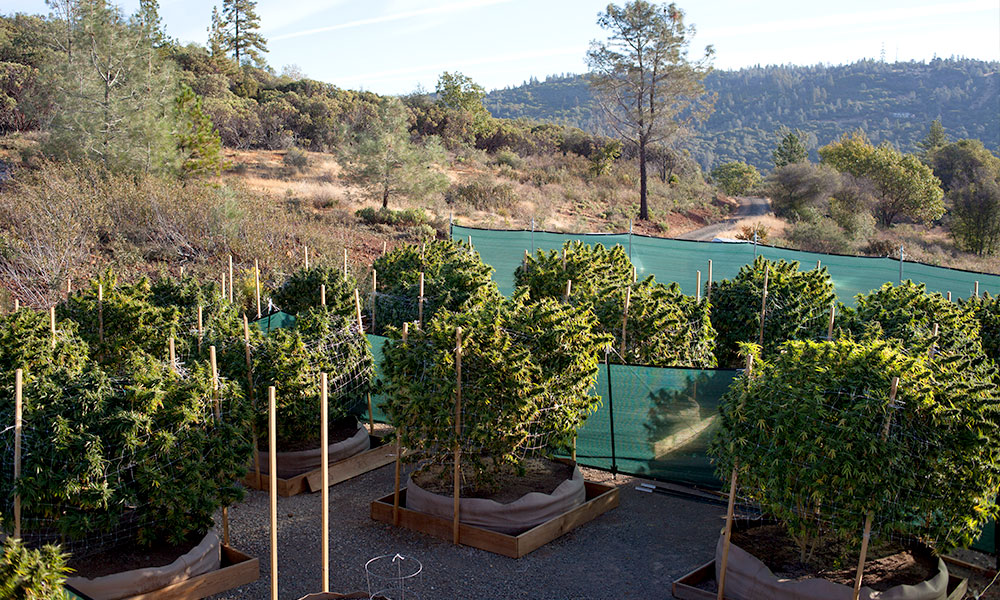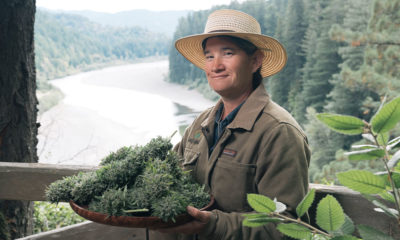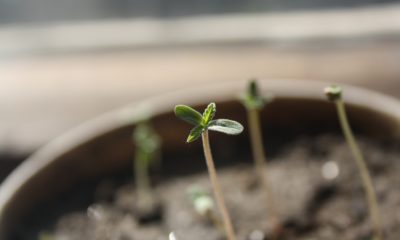
Cultivation
The Environmental Toll of Growing Cannabis, Both Legally and Illegally
In California, both illicit cannabis cultivation and large-scale legal growing can place undue stress on the environment, if growers act without consideration of the long-term ecological consequences of their farms.
Last week, a big multi-agency “reclamation” effort on national forest lands in California’s Emerald Triangle brought attention again to the serious environmental impacts of outlaw cannabis cultivation. But while environmental regulators condemn these illicit growers, they often overlook the obvious reality that legal crops also take an ecological toll. After years of breakneck well-drilling, much of California’s best farmland is threatened by drought and seawater intrusion into groundwater aquifers. With many California counties approving large-scale cannabis farms, the environmental impacts of growing cannabis is also an issue for the legal industry in the years ahead.
California Cleans Up Illicit Cannabis Grow Sites
The U.S. Forest Service last week announced the completion of a “marijuana grow site reclamation operation” in the Shasta-Trinity National Forest. Agents cleaned up a big mess apparently left behind by outlaw cannabis growers, including 30 miles of irrigation hose. Helicopters were called in to haul out several thousand pounds of fertilizer and equipment.
A total of 12 grow sites were identified and “reclaimed” in the operation, which included involvement of multiple government agencies and help from two local environmental non-profits.
“These grow sites were in remote locations and were difficult to access, making remediation efforts challenging and costly,” said USFS Patrol Captain Carson Harris in a press release. “The sites are far from roads, and because they contain toxic pesticides and other hazardous materials, HAZMAT protocols must be followed.”
“We used helicopters to airlift tons of garbage and miles of irrigation piping,” Harris added. “The team removed 950 pounds of fertilizer, 30 pounds of hazardous materials including pesticides, 24 propane tanks, 12 car batteries and 31.38 miles of irrigation hose. The total weight of infrastructure removed from the sites was 21,895 pounds.”
Concerns about the ecological impacts of outlaw cultivation on Northern California’s public lands have been mounting in recent years.
Last summer, a study commissioned by the Forest Service brought back the grim findings that contamination from use of pesticides and petrochemical fertilizers had turned thousands of acres, particularly in the Emerald Triangle, into virtual toxic waste dumps. In some cases, contamination of the sites was so severe that law enforcement officers who touched plants covered in illegal pesticides ended up in the hospital.
Bringing cultivation out from the shadows and under public oversight in order to mitigate such impacts was part of the impetus for Proposition 64, which legalized cannabis in the Golden State. On Jan. 1 of this year, the state’s new adult-use market and temporary regulations went into effect. But there is an increasing fear that outlaw cultivation will continue, due to the burdensome regulations in the legalized sector. In which case, environmental impacts, as well as militarized enforcement, could continue on the north country’s public lands.
The Ecological Impacts of Big Ag in California
Frequently forgotten in the debate around the environmental impacts of illegal cannabis growing is that legal crops also take an ecological toll.
This is becoming a rather inescapable reality in the Salinas and Central valleys, where agri-business now has ambitious plans to bring economies of scale to the legal cannabis market. Recent sobering headlines cast a dubious light on the sustainability of farming practices on the very lands that have for generations been producing much of the nation’s vegetables.
A May 14 report from the News Deeply website provides chilling details on the “groundwater emergency” now facing the Salinas Valley. Seawater is now intruding into freshwater aquifers, a result of runaway well-drilling. Intensive groundwater pumping has drawn in seawater from Monterey Bay, some 30 miles away. The problem isn’t new. Twenty years ago, Monterey County spent some $70 million to build the Castroville Seawater Intrusion Project, which injects recycled wastewater back into the ground to hold back the intrusive brine from the ocean. But this solution hasn’t been able to keep pace with continued unregulated well-drilling.
Gary Petersen, general manager of the Salinas Valley Basin Groundwater Sustainability Agency and coordinator of the working group, told News Deeply that water in the Salinas Valley was trapped in a “vicious cycle.”
The problem of water in California isn’t limited just to Monterey and Salinas.
In February, many farmers in California’s agricultural Central Valley were told by the federal government to expect 20 percent of the water they had requested for 2018.
A case can be made that cannabis conversion is part of the solution here, as it is less water-intensive than many crops now under cultivation. Casey O’Neill, a small cannabis farmer who serves as the board chair of the California Growers Association, wrote in The Ganjier that it requires .22 gallons of water to produce a single joint, as compared to five gallons per head of broccoli.
Clearly, ecological sustainability is an issue the cannabis industry will have to grapple with as it is institutionalized and increasingly regulated. In the push to bring cannabis growers down from the hills of prohibition, it’s worth recognizing and learning from the select cannabis growers who have been developing regenerative farming methods for cannabis for decades.
TELL US, do you know how your cannabis was grown?

























